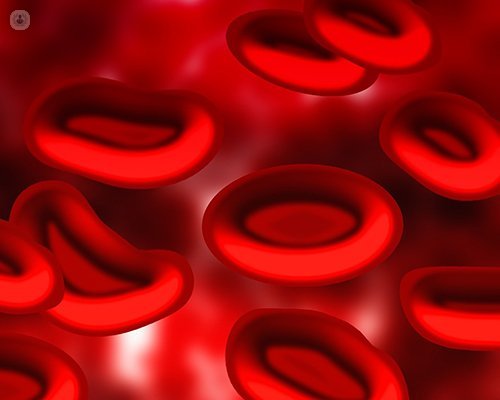Immune thrombocytopenic purpura in children (PTI)
Written by:When we perform a simple blood test can distinguish three main types of cells: red blood cell, white blood cells or leukocytes and platelets. When a patient is reported to have anemia, we understand that the number, quantity, or color and size of red blood cells are below the limits considered normal. When prompted, something less common, which has a leukopenia, specialists mean that the white blood cells are also below what is considered normal. Finally, that is what is discussed in this article, when platelets are low say that the patient has thrombocytopenia or thrombocytopenia, which can be perceived as a purpura (red spots), hemorrhagic purpuric (purple) thrombocytopenic or bleeding from the nose, or commonly called cardinals.
 Features of thrombocytopenia
Features of thrombocytopenia
Having taken these simple concepts, it should make clear that immune thrombocytopenia in children is relatively frequent, sometimes ostentatious, usually short course and complete healing by up to 90% of cases. No more than 10 - 20% become chronic, ie, exceed the time and considered 12 months. usually, this chronicity is more common in older children, adolescents and adults.
The term "immune" refers to something not easily understood by the patient, it means that somehow, the body reacts abnormally, ie defends something that is happening in their own platelets in your body; somehow struggle against himself by killing and leading to ostentatious demonstrations.
When a child, understanding aged below 15 to 18, has a platelet count below the limit (currently recognized as normal 100,000 platelets per mm3), we speak of immune thrombocytopenic purpura.
Immune thrombocytopenic purpura
Usually this disease is present in 80% of cases of acute, and it is not for nothing unusual about the child, this figure is even below 10,000 or 20.00 mm3. What happen? because this small or young teenager, will go to the pediatrician and the family concerned has appreciated manifestations at skin level or mucosal hemorrhagic appearance with: Sacred skin, nose (epistaxis), sacred sometime level device digestive or detection or observation of the appearance of red urine more concentrated or more. The last three assessments are extremely rare. Typically, go to the pediatrician by bruising (common cardinals medical terminology) more or less large, widespread and bleeding from the nose or gums.
In the absence of any other symptoms and reviewing history next two to three weeks, where febrile influenza virus type or not, an intake of any medication are detected, with potential possibility of toxicity to the cells of our body; and in the absence of unexplained fever or other alterations, the minimum obligation at that time is to perform a simple blood test where the numbers of red cells, white cells, platelets and the morphological appearance of these cells are valued, ie, appearance and normal or three types of outstanding cells in the first paragraph count.
thrombocytopenia
In the case of thrombocytopenia, all that will be altered is the low number of platelets, which input will confirm the suspected diagnosis of this entity and allow rule more or less serious diseases that involve an explanation, behavior and quite different prognosis.
The only serious and serious, the real concern in this age trombocitiopenia problem is the potential risk of hemorrhagic manifestation at the level of vital structures of our body. In this case, in the brain and always will be referred to as poor prognostic factor, but we can also assess its incidence does not exceed 0.1 to 0.2% of thrombocytopenia and, even in the event that it is manifest, urgent action early support measures could avoid unintended consequences.
Over 80% of cases of this disease are acute, ie occur abruptly in two, three or four days and disappear; it also solves acutely in less than seven days and six to twelve months, but already in rates platelet who combine the normal vital activity of the child, exceeding 50,000 mm3, and understanding that the risks of complications are practically nil .
Treatment of thrombocytopenia
Clinical performance and from the point of view of treatment of this disease in children before the disease is clear, specific and protocol. Depending on the numbers of platelets, the symptoms that the child, dry manifestations, hematomas (bruises), red spots, petechiae, etc. and more than 10,000 mm3 platelets, the attitude is often "wait and see", that is, wait and see. Most cases are resolved without any therapeutic approach. If the demonstrations are wet, epistaxis, bleeding gums, urinary intestinal tract, among others, and the platelet count is below 20,000 mm3, the attitude will be the administration of gamma globulin, ie defense against the problem it is producing, or corticosteroids, drugs that serve fortunately many treatments in medical practice.
If the disease and its manifestations are severe with vital commitment, all therapy, all treatment is useful, since cortoicoesteriodes, gamma globulin, platelet transfusion to performing splenectomy, ie remove the spleen, where usually destroy normal platelets .
There and recently marketed oral drug treatments colony stimulating platelet formation which solve, in many cases, patients with chronic or refractory disease, that is, does not respond to anything, must be regularly monitored in hospitals and they are fortunately becoming less frequent.
Edited by Roser Berner Ubasos.



